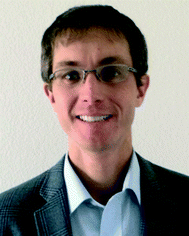Advances in directed assembly: a themed collection
Paul F.
Nealey
and
Mark
Stoykovich
Institute for Molecular Engineering, University of Chicago, 5640 South Ellis Avenue, USA
Directed self-assembly is arguably the most promising strategy for high-volume cost-effective manufacturing at the nanoscale. Over the past decades, manufacturing techniques have been developed with such remarkable efficiency that it is now possible to engineer complex systems of heterogeneous materials at the scale of a few tens of nanometers. Further evolution of these techniques, however, is faced with difficult challenges not only in feasibility of implementation at scales of 10 nm and below, but also in prohibitively high capital equipment costs. Materials that self-assemble, on the other hand, spontaneously form nanostructures down to length scales at the molecular scale, but the micrometer areas or volumes over which the materials self-assemble with adequate perfection in structure is incommensurate with the macroscopic dimensions of devices and systems of devices of industrial relevance. Directed self-assembly (DSA) refers to the integration of self-assembling materials with traditional manufacturing processes. The key concept of DSA is to take advantage of the self-assembling properties of materials and at the same time meet the constraints of manufacturing. Put another way, DSA enables current manufacturing process capabilities to be enhanced and augmented at drastically reduced cost.
This collection aims to highlight recent progress in the field of directed self-assembly, with a special emphasis on the use of templates, external fields, and/or control of molecular-level interactions to induce self-assembling materials such as block polymers to organize with precise two- or three-dimensional nanostructure. The collection emphasizes, where possible, how the structure resulting from directed self-assembly (not self-assembly) of the materials system imparts specific properties, function, or organization over device-relevant length scales that enable high value-added applications.
| This journal is © The Royal Society of Chemistry 2017 |


